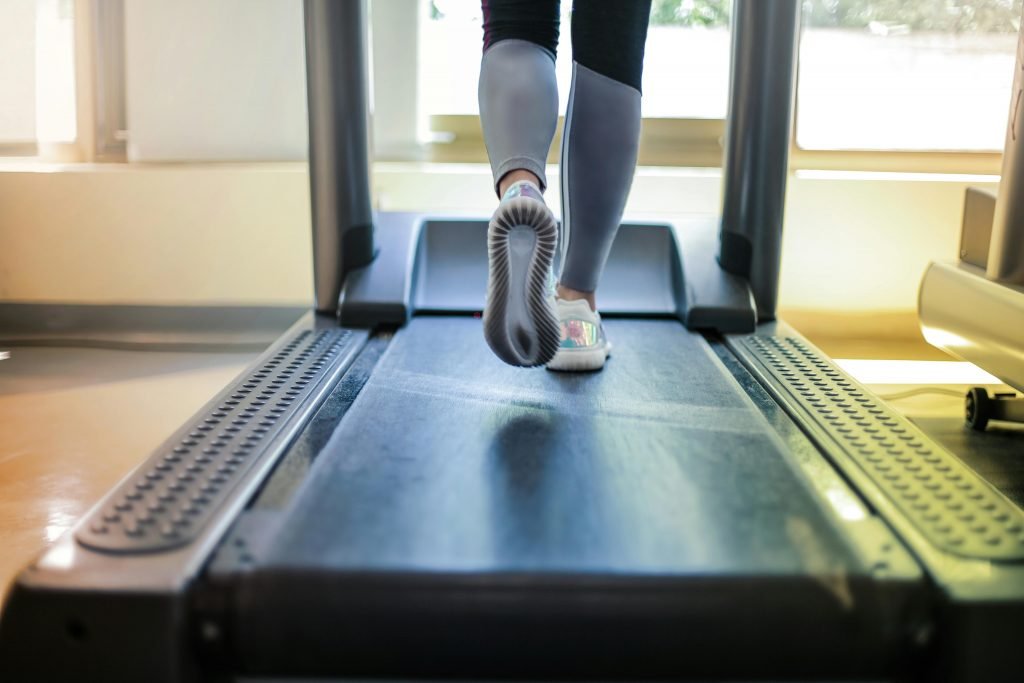A Lifeline for Recovery & Strength
Introduction
Treadmill exercise is often one of the most recommended strategies to retrain your autonomic nervous system, boost circulation, and improve overall quality of life. Living with POTS (Postural Orthostatic Tachycardia Syndrome) can feel like an uphill battle—literally. Even the act of standing can send your heart rate skyrocketing. But here’s the twist: one of the best tools to manage this condition might just be a treadmill.
Let’s dive into why using a treadmill with POTS isn’t just helpful—it’s transformative.
Understanding POTS and Its Challenges
POTS is a form of dysautonomia, a condition that disrupts the automatic functions of the body—like heart rate, blood pressure, and circulation. People with POTS often feel lightheaded, fatigued, dizzy, or experience a rapid heart rate upon standing.
How long did it take you to get a POTS diagnosis?
Since the issue is related to poor blood flow regulation and autonomic instability, building cardiovascular endurance can significantly improve symptoms. That’s where structured, recumbent-to-upright exercise programs—especially using treadmills—come into play.
Why Exercise Matters in POTS Treatment
Contrary to what your body might be screaming at you, regular physical activity is actually one of the most evidence-backed therapies for POTS. Why?
- It strengthens the cardiovascular system
- It builds muscle tone, especially in the lower body
- It improves blood volume regulation
- It helps recondition the autonomic nervous system
- It reduces fatigue and improves mental health
But not all exercises are created equal—especially with POTS. Treadmill walking, especially on a slight incline, can offer gentle yet progressive resistance that suits a deconditioned system.

Treadmill Exercise: A Safe and Customizable Option
Using a treadmill allows you to:
- Start slow and flat, then gradually increase the challenge
- Monitor your heart rate with built-in trackers
- Avoid sudden posture changes (compared to outdoor walking)
- Exercise in a climate-controlled environment (important for POTS)
- Track progress with time, distance, and incline metrics
Plus, you can pause or hold on when needed, making treadmill workouts safer and more flexible.
Starting Slow: A Sample Treadmill Routine for Beginners with POTS
Here’s an example of a low-intensity POTS-friendly treadmill workout:
Week 1–2:
- Incline: 0%
- Speed: 1.0–1.5 mph
- Time: 10 minutes, 5 days/week
Week 3–4:
- Incline: 1%
- Speed: 1.5–2.0 mph
- Time: 15–20 minutes, 5 days/week
Gradually increase the speed and incline only when symptoms are stable. Never push into dizziness or extreme fatigue—listen to your body.
Incline Treadmill Walking: A POTS-Friendly Upgrade
Using the incline feature is a game-changer. Why?
- Walking on an incline activates the calf muscle pump, helping push blood back toward the heart—something the dysautonomic body struggles with.
- Incline walking builds lower body strength, particularly in muscles that help stabilize blood pressure upon standing.
- It provides cardiovascular challenge without high-impact movement, which can be triggering for some with POTS.
Start with a 1% incline and increase slowly as tolerated.
Cardiovascular Conditioning Without Overexertion
Treadmill walking allows you to enter the aerobic zone without pushing into anaerobic overdrive, which is important for people with exercise intolerance. A heart rate monitor is your best friend—aim to stay in a safe, moderate range (usually 50–70% of your max heart rate).
This level of activity helps build endurance and stabilize your autonomic response over time.
The Psychological Benefits of Treadmill Exercise
Let’s not forget the mind-body connection.
- Regular treadmill workouts help with anxiety and depression—both common in chronic illness.
- Exercise boosts dopamine and serotonin levels naturally.
- Structured routines give a sense of control and accomplishment, something many with POTS feel they’ve lost.
Even 10 minutes a day can lift your spirits.
Building a POTS Exercise Routine at Home
Having a manual or motorized incline treadmill at home makes consistency easier. Here’s how to set it up:
- Keep it in a cool, quiet space.
- Have water and a chair nearby.
- Wear compression garments if recommended.
- Exercise after your morning hydration and salt intake.
- Use electrolyte supplements to maintain balance.
Make it a ritual. You’re not just walking—you’re rebuilding your body’s foundation.
Safety Tips for Treadmill Use with POTS
- Always hydrate beforehand
- Avoid standing still for too long after the session—walk or sit with feet elevated
- Monitor symptoms during and after the workout
- Don’t exercise during flare-ups
- Use side rails for support if needed
It’s okay to rest. The goal is consistency, not intensity.
Tracking Progress and Celebrating Small Wins
With POTS, the gains might feel slow—but they are real. Track:
- Time spent walking
- Average heart rate
- Post-exercise symptoms
- Days per week completed
Celebrate each milestone. That extra 2 minutes? That’s a victory.
Why Treadmill Training Beats Outdoor Walking for POTS
Yes, fresh air is great—but treadmill workouts are:
- Easier to control (no hills, no sudden temperature changes)
- Safer in case of dizziness or fatigue
- Trackable—you can monitor your data and tweak accordingly
Especially early in recovery, having a treadmill offers a stable, secure environment to rebuild your strength.
Complementary Therapies to Enhance Results
Treadmill walking works best when paired with:
- High-sodium, high-fluid diet
- Compression garments
- Strength training (recumbent first, then upright)
- Meditation or breathing exercises
- A sleep hygiene routine
Together, these strategies create a foundation of healing.
FAQs The Importance of Using a Treadmill with POTS
1. Can treadmill exercise really help with POTS symptoms?
Yes! Studies and patient experiences show that structured cardiovascular exercise—especially walking on an incline—can significantly reduce POTS symptoms over time.
2. What’s the best time of day to exercise with POTS?
Mornings are often ideal, especially after salt and fluid intake. Avoid exercising when symptoms are flaring or during extreme fatigue.
3. How do I prevent dizziness during treadmill workouts?
Start slow, wear compression socks, stay hydrated, and pause if symptoms worsen. Cooling the room can also help prevent overheating.
4. Is a motorized treadmill better than a manual one?
Both can work well. Manual treadmills offer more control at very low speeds, while motorized ones are better for tracking incline and data.
5. Can I use other equipment besides a treadmill?
Yes—recumbent bikes and rowing machines are great alternatives. But treadmill walking has the added benefit of postural training.
Conclusion
Treadmill exercise is more than just physical movement—it’s a lifeline for people with POTS. It offers structure, safety, and a path toward reclaiming strength and stability. With the right approach, it becomes a gentle but powerful way to train your body out of dysautonomia and back into balance.
Don’t worry about running marathons—just stepping on and showing up daily is enough. Over time, you’ll be amazed at how far you’ve come.


